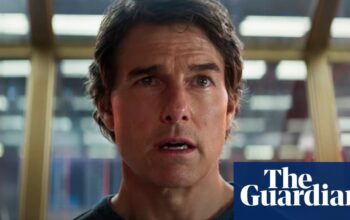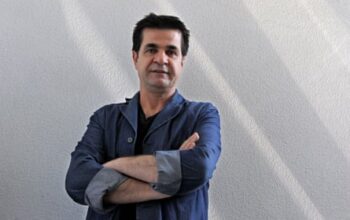
I
It has been two decades since John Woo’s last American film, the convoluted sci-fi thriller Paycheck. Despite his absence as a director, his influence has remained prevalent. Directors David Leitch and Chad Stahelski, who have created films such as Bullet Train and John Wick, heavily draw from Woo’s sophisticated and dramatic style. In fact, they even keep a photo of him in their shared office. With the current success of action movies (the Wick franchise has grossed over $1 billion), it is fitting that Woo, often regarded as a pioneer in the genre, would make a comeback to reclaim his position of dominance.
While John Woo’s revenge film Silent Night may not be exceptional enough to merit a standing ovation, it also doesn’t fall short enough for us to mourn the filmmaker he once was. It is a competent production that serves more as a warm-up than a victory lap. The story follows Godlock (played by Joel Kinnaman), a grieving father whose son is killed in a drive-by shooting. Consumed by grief and rage, he devotes himself to becoming a ruthless killer and spends a year planning his revenge on those responsible for his family’s tragedy.
The movie follows a common plot in a world heavily influenced by the film Taken, which was only created because of the 1974 movie Death Wish. In this world, fathers seek revenge on those who caused them trauma through violent means (while the fate of grieving mothers is a darker story). Silent Night is similar to Death Wish in this aspect, as the main character is forced to become a vigilante in a world overrun by crime. The film’s title has a double meaning, as it takes place during Christmas and also has minimal dialogue, posing a challenge for both the director, Woo, and the audience.
Kinnaman’s father, a motivated man, becomes unable to speak after being shot in the throat at the beginning of the film. As a result, his grief and determination must be expressed through a limited range of facial expressions, primarily sadness and anger. Emotional depth is not typically expected from either Kinnaman as an actor or these types of films, and even the talented Catalina Sandino Moreno, an Oscar nominee, is restricted to the role of a silent wife. The film is structured like a video game, with a constant stream of boss battles, so the lack of dialogue and character development is not a major loss. However, it does put a lot of pressure on director Woo, who must rely on his aesthetic skills to impress the audience. While this approach is mostly successful, there are moments where Woo’s stylistic choices are both brilliant and unappealing. His love for dramatic storytelling only surfaces briefly in this film, and it is often more enjoyable to watch the characters prepare for their missions than it is to witness the ensuing carnage. The story of an ordinary man training to become a killer makes for a more engaging journey than the typical action movie plot.
Maybe it’s also because we have high expectations for Woo to flawlessly execute the finale, that we feel a bit disappointed when he falls short. While there are impressive moments, particularly with a spiral staircase, the chaotic mix of gunshots and screeching tires can be surprisingly lackluster at times. The fight scenes are poorly choreographed and just average when they should be exceptional. In a year where sequels like John Wick and Mission: Impossible have showcased groundbreaking creativity, Woo’s return is harder to rally behind. He still has skill, but is that sufficient?
-
Silent Night is now out in US cinemas and in the UK at a later date
-
This article was edited on December 1st to correct an error. Instead of being labeled as an Oscar winner, Catalina Sandino Moreno was incorrectly referred to.
Source: theguardian.com


